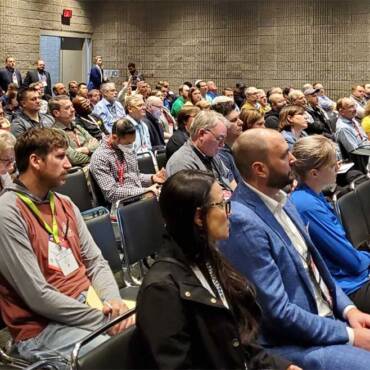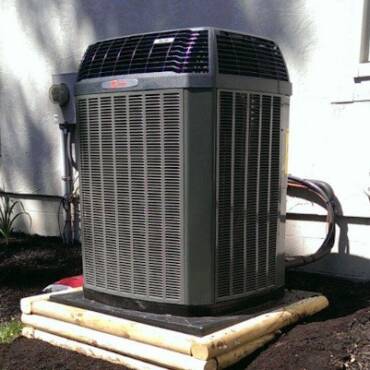Opportunity is knocking for the HVAC industry in the form of consumer rebates offered through the federal Inflation Reduction Act (IRA), and contractors who haven’t planned their approach to leveraging these incentives would be well advised to do so now.
Although it got off to a slow start — who knew it could take so long to organize a multi-billion-dollar government cash giveaway? — the IRA’s $8.8 billion Home Energy Rebates programs are gaining momentum, and a few of the larger states, including California and New York, are currently offering rebates.
It sounds like a lot of money, $8.8 billion, but half of that has already been spoken for.
So far, according to a recent U.S. Department of Energy update, nine states and the District of Columbia have launched rebate programs, 11 states have had funding approved but have not yet begun programs, and eight other states have submitted funding applications. Those 28 states and Washington D.C., the DOE said, have either partially received or are laying claim to a total of $4.4 billion.
Of the remaining states and the five U.S. territories, the DOE said, all but one have a funding application in the works. The outlier is South Dakota.
“South Dakota will have no part in facilitating the Green New Deal,” said a statement from the office of Gov. Kristi Noem, a Republican. Other states and territories will split South Dakota’s allocation of more than $68.5 million.
Home Energy Rebates consists of two programs: Home Electrification and Appliance Rebates (HEAR) and Home Efficiency Rebates (HER).
Home Energy Rebates are managed by individual states, some of which are rolling out their programs in phases, starting, for example, with one rebate program and not the other, or beginning pilot programs limited to certain geographic areas.
HEAR rebates are aimed at households with low and moderate incomes, and are meant to subsidize the purchase and installation of certain Energy Star-certified electrical equipment, such as heat pumps and heat-pump water heaters. The HEAR program’s rebate of up to $8,000 for a heat pump, which has grabbed the most headlines, is available to low-income households — those with an income of 80% or less of the median income in their area. A moderate-income household, defined as one with between 80% and 150% of the area median income, would be eligible for up to $4,000 for a qualified heat pump.
HEAR rebates are also offered for heat-pump clothes dryers, induction ranges, and home energy-efficiency projects such as new insulation, and for the electrical upgrades that may be needed to accommodate central heat pump systems. The owners of rental housing are eligible for HEAR rebates when enough of their renters meet specific income guidelines.
HER rebates are a little trickier: They’re available to households of all income levels, but are based on energy savings that have to be measured, or modeled, with the use of approved software. Energy savings minimums must be met, and rebate amounts vary according to how much energy is saved. Certain Energy Star-certified HVAC products are eligible for HER projects, and so are energy-saving home retrofits such as new doors, new windows, and new insulation.
Here are some points contractors should keep in mind when planning their approach to selling with the help of Home Energy Rebates:
- It’s not too late: Although $8.8 billion isn’t a lot of money when spread across the country — the city of Los Angeles alone has a substantially bigger annual budget — many states that have launched a rebate program have done so in phases, meaning money is being reserved for future phases.
California, for example, is limiting the $80 million first phase of its HEAR program to multifamily dwellings, with single-family homes to be added in the coming weeks. But California’s total allocation for both HEAR and HER is more than $582 million, meaning there are more phases of those programs to come.
Plus, a majority of states have not yet begun IRA rebate programs, so contractors in those states can still easily get on board. - It’s not too early either: As Peter Troast, founder and CEO of Energy Circle, pointed out recently, contractors should take advantage of the rebates’ slow rollout to plan their approach. They can do so, Troast said, by gathering information, preparing a marketing plan, and staying in touch with the energy officials in their respective states.
- Don’t get lost in the alphabet soup: Different abbreviations have been used for the HEAR and HER programs, and not everyone got the memo when the shorthand changed. HEAR is also called HEEHR, for High-Efficiency Electric Home Rebates, and HER is sometimes called HOMES, for Home Owners Managing Energy Savings. HOMES was also the title of a similar, pre-IRA incentive program.
- Take advantage of online resources: DOE has several good websites on the rebates, including one with details on the Home Energy Rebates programs (www.energy.gov/scep/home-energy-rebates-programs) and another with a frequently updated interactive map (www.energy.gov/save/rebates) that shows the status of the programs in each state. There are also online area median income lookup tools, like this one from Freddie Mac, and, of course, the Database of State Incentives for Renewables & Efficiency (www.dsireusa.org), which is managed by the N.C. Clean Energy Technology Center at North Carolina State University and has information about state and local efficiency incentives as well as those in the IRA.
- Don’t let income-based income eligibility guidelines deter you: The HEAR half of the $8.8 billion in rebates is going to low- and moderate-income households, but the area median household income in some places is quite high, and up to 150% of the median is still considered moderate income.
The median income in San Francisco, California, is more than $136,000 — and even higher in some neighborhoods — so a household there with a $200,000 annual income may still be in the moderate category. And in lower-income neighborhoods, contractors should be able to find homeowners and landlords interested in upgrading their properties.
Whether you require installation, repair, or maintenance, our technicians will assist you with top-quality service at any time of the day or night. Take comfort in knowing your indoor air quality is the best it can be with MOE heating & cooling services Ontario's solution for heating, air conditioning, and ventilation that’s cooler than the rest.
Contact us to schedule a visit. Our qualified team of technicians, are always ready to help you and guide you for heating and cooling issues. Weather you want to replace an old furnace or install a brand new air conditioner, we are here to help you. Our main office is at Kitchener but we can service most of Ontario's cities
Source link



